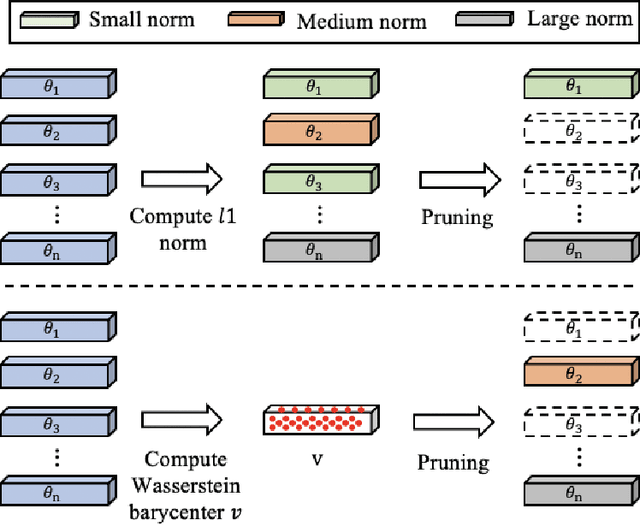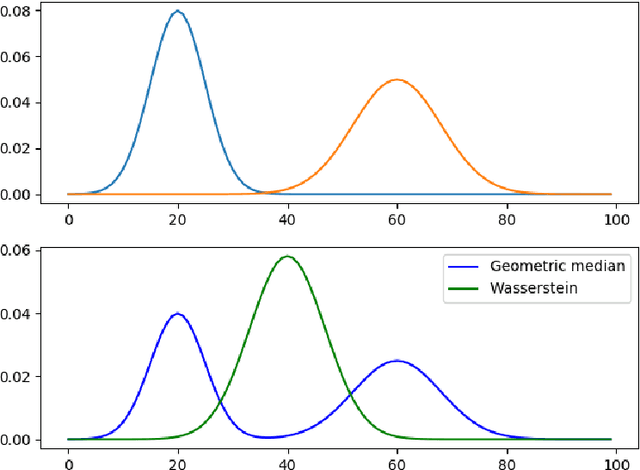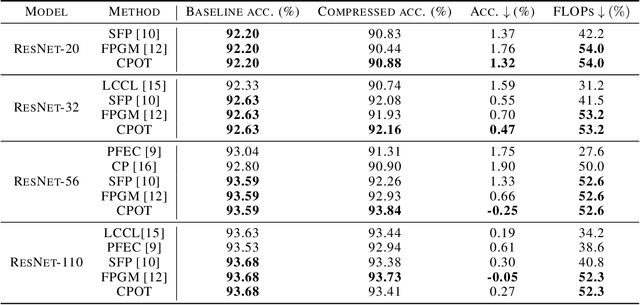CPOT: Channel Pruning via Optimal Transport
Paper and Code
May 21, 2020



Recent advances in deep neural networks (DNNs) lead to tremendously growing network parameters, making the deployments of DNNs on platforms with limited resources extremely difficult. Therefore, various pruning methods have been developed to compress the deep network architectures and accelerate the inference process. Most of the existing channel pruning methods discard the less important filters according to well-designed filter ranking criteria. However, due to the limited interpretability of deep learning models, designing an appropriate ranking criterion to distinguish redundant filters is difficult. To address such a challenging issue, we propose a new technique of Channel Pruning via Optimal Transport, dubbed CPOT. Specifically, we locate the Wasserstein barycenter for channels of each layer in the deep models, which is the mean of a set of probability distributions under the optimal transport metric. Then, we prune the redundant information located by Wasserstein barycenters. At last, we empirically demonstrate that, for classification tasks, CPOT outperforms the state-of-the-art methods on pruning ResNet-20, ResNet-32, ResNet-56, and ResNet-110. Furthermore, we show that the proposed CPOT technique is good at compressing the StarGAN models by pruning in the more difficult case of image-to-image translation tasks.
 Add to Chrome
Add to Chrome Add to Firefox
Add to Firefox Add to Edge
Add to Edge